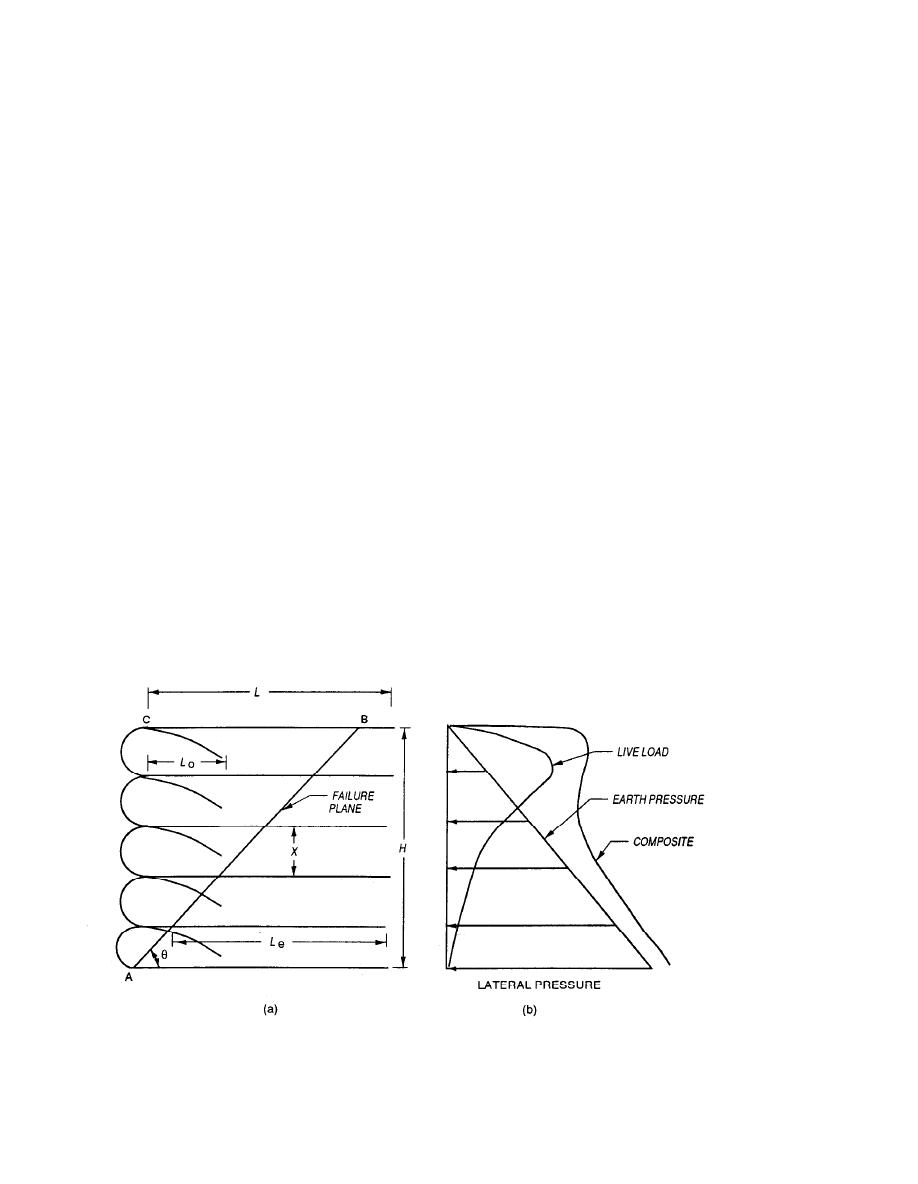
TM 5-818-8/AFJMAN 32-1030
c. When aesthetic appearance is important, a
centimeters per second. The ranking order indi-
low-cost solution like the facing system comprised
cates that gravels are not at the top. Although
of used railroad ties or other such materials can be
they posses high permeability and, possibly, high
used.
strength, their utilization requires special atten-
d. No weepholes are specified, although after
tion. Gravel, especially if it contains angular
UV and vandal protection measures the wall face
grains, can puncture the geotextile sheets during
may be rather impermeable. To ensure the fast
construction. Consequently, consideration must be
removal of seeping water in a permanent struc-
given to geotextile selection so as to resist possible
ture, it is recommended to replace 1 to 2 feet of
damage. If a geotextile possessing high puncture
the natural foundation soil (in case it is not
resistance is available, then GP and GW should
free-draining) with a crushed-stone foundation
replace SP and SW, respectively, in their ranking
layer to facilitate drainage from within and behind
order. The retained soil unit weight should be
the wall. The crushed rock may be separated from
specified based on conventional laboratory compac-
the natural soil by a heavy weight geotextile
tion tests. A minimum of 95 percent of the maxi-
meeting filter criteria of chapter 3.
mum dry unit weight, as determined by ASTM D
698 should be attained during construction. Since
7-6. Properties of Materials
the retained soil will probably be further densified
a. Retained Soil. The soil wrapped by the geo-
as additional layers are placed and compacted, and
textile sheets is termed "retained soil." This soil
may be subjected to transitional external sources
must be free-draining and nonplastic. The ranking
of water, such as rainfall, it is recommended for
(most desirable to less desirable) of various re-
design purposes that the saturated unite weight be
tained soils for permanent walls using the Unified
used.
Soil Classification System is as follows: SW, SP,
GW, GP, and any of these as a borderline classifi-
forced wall (the soil to the right of L in figure 7-1)
cation which is dual designated with GM or SM.
is termed "backfill soil." This soil has a direct
The amount of fines in the soil is limited to 12
effect on the external stability of the wall. There-
percent passing sieve No. 200. This restriction is
fore, it should be carefully selected. Generally,
imposed because of possible migration of fines
backfill specifications used for conventional retain-
being washed by seeping water. The fines may be
ing walls should be employed here as well. Clay,
trapped by geotextile sheets, thus eventually creat-
silt, or any other material with low permeability
ing low permeability liners. Generally, the perme-
should be avoided next to a permanent wall. If low
ability of the retained soil must be more than 10-3
quality materials are used, then a geotextile filter
Figure 7-1. General Configuration of a Geotextile Retained Soil Wall and Typical Pressure Diagrams.
7-2


 Previous Page
Previous Page
